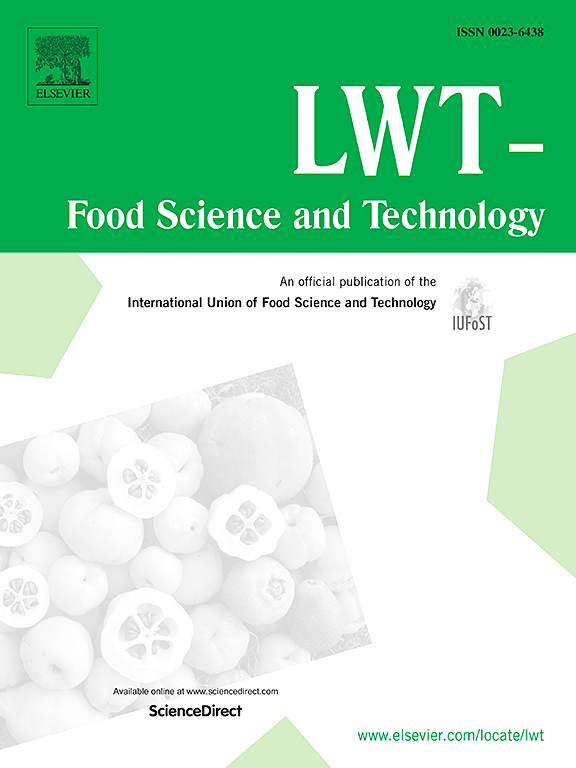Nanoencapsulation of flaxseed oil: Fabrication, characterization, and storage stability
IF 6
1区 农林科学
Q1 FOOD SCIENCE & TECHNOLOGY
引用次数: 0
Abstract
As a class of oil with high polyunsaturated fatty acid content, the poor oxidative stability of flaxseed oil (FO) has been the key factor restricting its expanded use. FO was encapsulated using flaxseed gum nano-capsules loaded with secoisolariciresinol diglucoside as wall materials. Flaxseed oil nano-capsules (FO-NC) had a particle size of 208.22 nm, an encapsulation efficiency of 96%, a PDI value of 0.131, and a zeta potential of −21.98 mV. By monitoring the changes in the above indicators during accelerated storage of FO-NC, the mechanism of the change in stability of FO-NC was comprehensively analyzed. The study also showed that the nano-encapsulated FO improved its oxidative stability by determining the fatty acid composition, peroxide value and oxidative stability index. Transmission electron (TEM) micrographs showed that FO-NCs were spherical, with a smooth surface. FTIR showed that the FO had been successfully encapsulated. The FO-NC showed good stability over 0–7 days, with higher oxidative stability than unencapsulated FO emulsions. Encapsulation efficiency is a key factor in the stability of FO-NC. The results suggest that nano-encapsulation is an effective means to enhance the oxidative stability of FO.

求助全文
约1分钟内获得全文
求助全文
来源期刊

LWT - Food Science and Technology
工程技术-食品科技
CiteScore
11.80
自引率
6.70%
发文量
1724
审稿时长
65 days
期刊介绍:
LWT - Food Science and Technology is an international journal that publishes innovative papers in the fields of food chemistry, biochemistry, microbiology, technology and nutrition. The work described should be innovative either in the approach or in the methods used. The significance of the results either for the science community or for the food industry must also be specified. Contributions written in English are welcomed in the form of review articles, short reviews, research papers, and research notes. Papers featuring animal trials and cell cultures are outside the scope of the journal and will not be considered for publication.
 求助内容:
求助内容: 应助结果提醒方式:
应助结果提醒方式:


